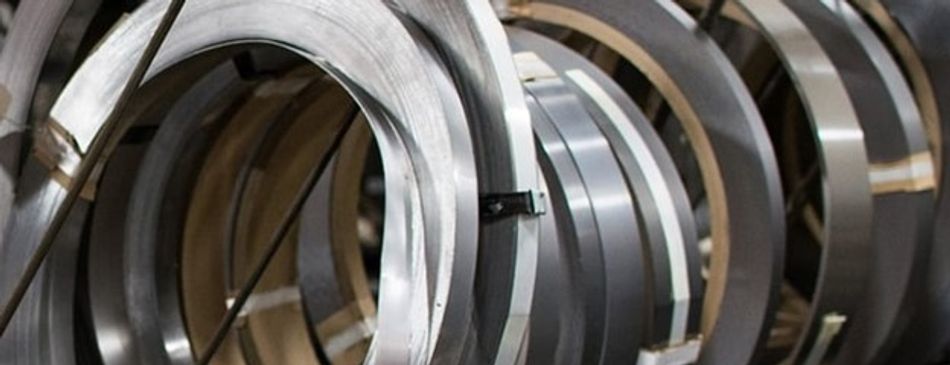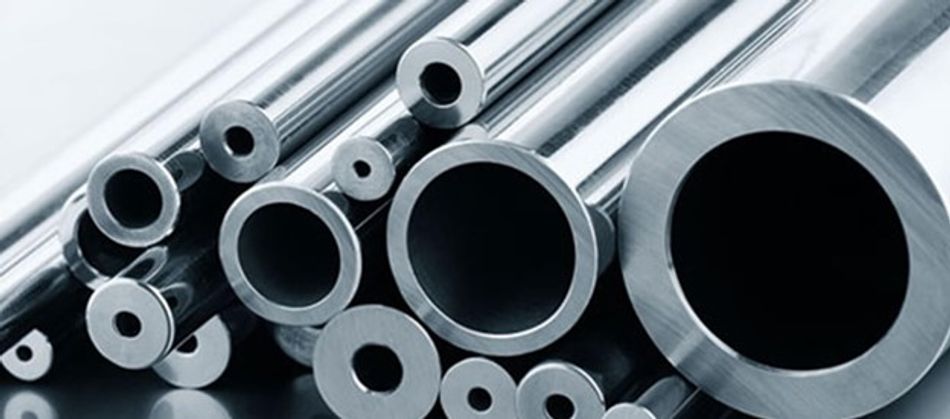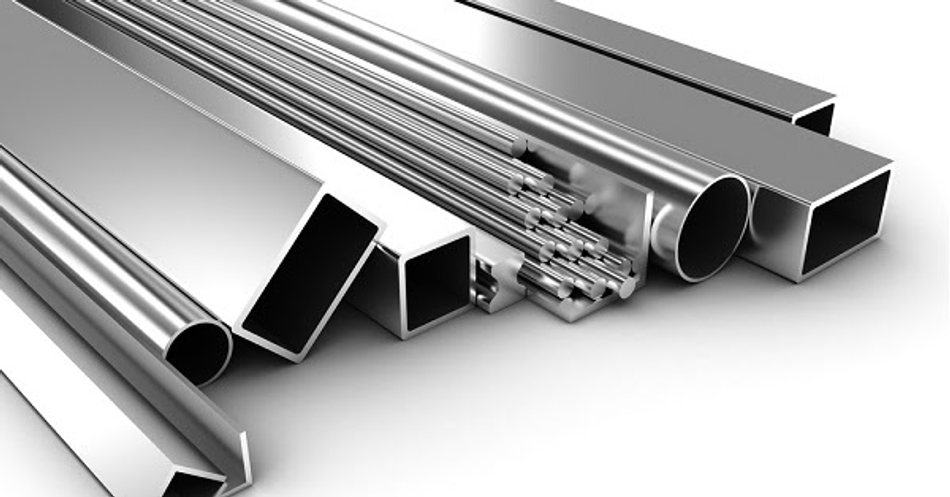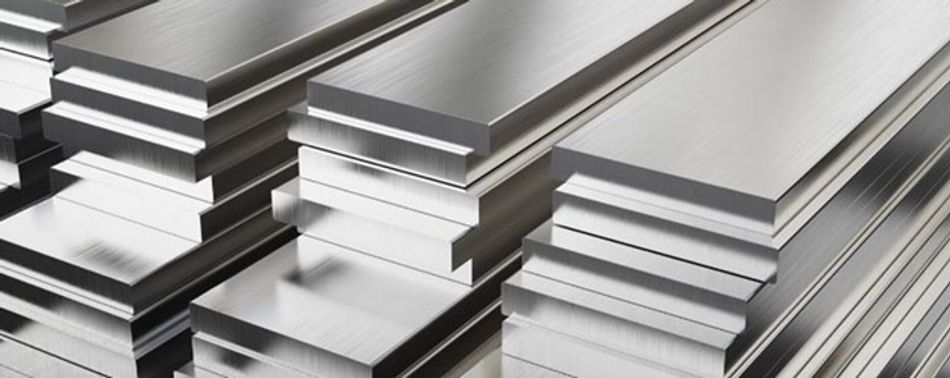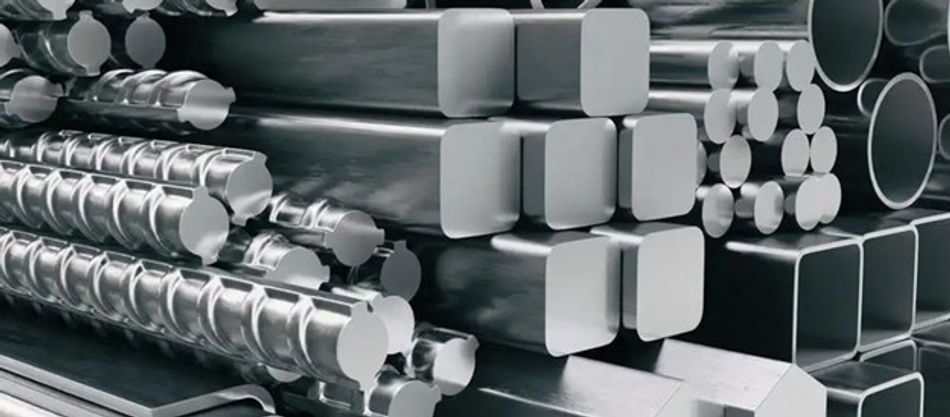Alloy Steel vs Stainless Steel: Exploring the Differences
Steel is an alloy of iron and carbon and a basic part of industries such as construction and the military due to its strength, durability, customizability, and quick fabrication. Of the several types of steel available in the market, the alloy steel vs stainless steel comparison is one of the many comparisons common among manufacturers who want to work with steel.
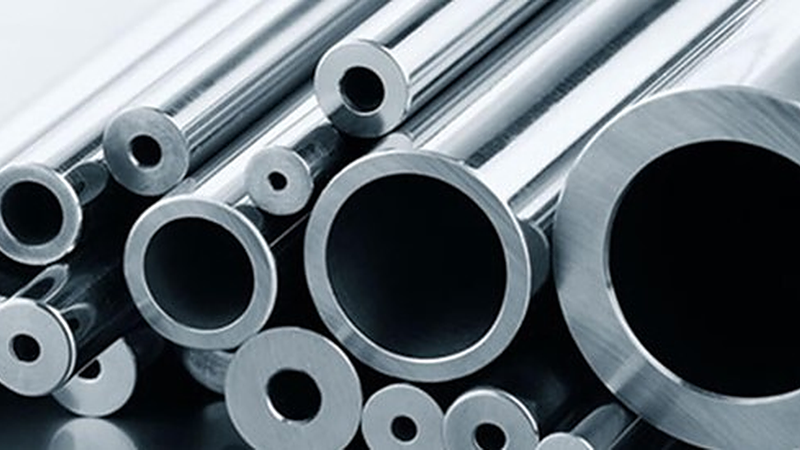
alloy steel
This article was first published on
www.rapiddirect.comSteel is an alloy of iron and carbon and a basic part of industries such as construction and the military due to its strength, durability, customizability, and quick fabrication. Of the several types of steel available in the market, the alloy steel vs stainless steel comparison is one of the many comparisons common among manufacturers who want to work with steel.
Selecting any of the two types of steel should only occur after understanding their properties in relation to the project. As a result, this article breaks down everything you need to know about the comparison of stainless steel vs alloy steel. It shows the characteristics, behaviors, and differences between alloy steel and stainless steel so you can choose any of them for your project.
Composition and Classification Difference Between Alloy Steel and Stainless Steel
Alloy Steel
Low Alloy Steel vs High Alloy Steel
Alloy steels are classified into high and low alloy steels based on the percentage of alloying elements (not the carbon and iron) present.
- Low alloy steel contains alloying elements that form nothing more than 5% of the total material composition. Incorporating the alloying elements increases the material’s mechanical properties and corrosion resistance compared to the base steel. Common alloying elements that can make up low alloy steels include Nickel (Ni), Chromium (Cr), Vanadium (V), Copper (Cu), Tungsten (W), and Boron (B)
- High alloy steel contains alloying steel that forms more than 5% of the total material composition. The higher percentage drastically increases the materials’ mechanical properties. Stainless steel is an example of high alloy steel as it contains at least 12% Chromium depending on the stainless steel grade.
Common Alloying Elements and Their Effects
Using over 20 alloying elements can enhance carbon steel’s mechanical properties. Each alloying element has the unique properties it bestows on carbon steel. Below are the five most common alloying elements:
- Manganese with small amounts of phosphorus and sulfur makes the formed steel alloy less brittle and more malleable.
- Chromium has an effect depending on the percentage. When used at a small percentage (0.5% – 2%), it can increase the material’s hardness. A higher percentage (4% – 18%) can enhance corrosion resistance.
- Vanadium in about 0.15% can increase carbon steel’s strength, heat resistance, and overall grain structure. When used with Chromium, the formed steel alloy has increased hardness without losing formability.
- Nickel also has an effect depending on the percentage. At about 5%, the formed steel alloy has increased strength. A higher percentage (over 12%) will enhance the formed alloy’s corrosion resistance.
- Tungsten will increase the structural makeup of the formed steel alloy. Furthermore, it increases the heat resistance leading to an increased melting point.
Stainless Steel
Stainless steel is a high alloy steel known for its extreme corrosion resistance and aesthetic appeal. Generally, it contains at least 10.5% Chromium, responsible for the hardness and corrosion resistance, less than 1.2% Carbon, and other alloying elements.
Chromium Content and Its Importance
Depending on the needed properties and the grade, stainless steel can also contains other alloying elements such as titanium, manganese, and nickel. The presence of Chromium leads to the formation of chromium oxide when in contact with oxygen. This process, known as stainless steel passivation, helps to protect the metal and allows it to self-repair itself. Due to its properties, stainless steel is important in the following ways.
- Its high heat resistance makes it important in heat exchangers, boilers, valves, and superheaters.
- It prevents bacterial growth, making it applicable in functions requiring high hygiene.
- It has a high strength-to-weight advantage which makes it useful in the automotive and aircraft industry.
- It is 100% recyclable.
Common types of stainless steel
Many types of stainless steel materials are classified into five major groups. Below is a short explanation of the types of stainless steel.
- Austenitic Stainless Steel Grades are nonmagnetic SS that contains 17-25% Chromium and 8-20% Nickel and other alloying elements. They have excellent ductility, corrosion resistance, and toughness, high formability and weldability. They also contain molybdenum which greatly enhances corrosion resistance. Examples include 304/304L, 316/316L, and 253.
- Ferritic Stainless Steel Grades contain 10.5% Chromium responsible for its corrosion resistance. They are used in the annealed condition as strengthening is not possible or useful with cold working or heat treatment. Furthermore, their lack of toughness which reduces their structural application and limits their availability to sheet and coil. Examples include 409 and 430 SS.
- Martensitic Stainless Steel Grades contain 12 to 16% Chromium and 0.08% to 2% carbon. They are heat treatable, have reduced weldability, lower ductility and are not compatible with cold working. Examples include the 410, 420C, and 431 Grades of SS.
- Duplex Stainless Steel Grades contain equal parts of austenite and ferrite. They contain 18-29% Chromium, 3-8% Nickel, and other alloying elements such as Molybdenum and Nitrogen. They are strong, durable, corrosion-resistant, and resistant to pitting and chloride stress. However, they are not subject to heat treatment and respond poorly to cold working. Nevertheless, they are magnetic, weldable, and easy to fabricate. Examples include 2205 and S32750 grades of SS.
- Precipitation-hardening stainless steel grades contain 12-16% Chromium and 3-9% Nickel and small alloying elements such as Al, Cu, and Ti, which can form a precipitate. They are heat treatable, strong, and very ductile. Machining occurs in the annealed condition, after which tempering occurs.
Comparing Mechanical Properties of Alloy Steel vs Stainless Steel
The mechanical properties are the major form of alloy vs stainless steel comparison. Although each type of alloy or stainless steel can differ, below are a general representation of their comparison in terms of their mechanical properties:
Tensile Strength
Tensile strength denotes the ability of a material to withstand tensile stress before breaking, and it depends on the alloy and the heat treatment process. Alloy steels have higher tensile strength (758-1882) than stainless steel (515-827). As a result, alloy steels have more structural applications.
Hardness
Hardness is a measure of a material to resist wear and abrasion and depends on the material composition and heat treatment. Due to less than 5% alloying elements, alloy steels have a higher hardness ranging from 200HB to 600HB (Brinell hardness) and wear resistance than stainless steel. Stainless steel ranks 8 on the Mohs hardness scale and 150HB to 300HB on the Brinell scale, which renders it less hard than most metals, although it is harder than materials such as copper and aluminum.
Ductility
Ductility measures the ability of a material to elongate without undergoing fracturing, depending on the heat treatment. Alloy steels have a higher ductility than stainless steel. As a result, they are more suitable for applications that require forming shapes without breaking. This is evident in their applications in precision-required engineering in making delicate components.
Impact Resistance
The higher hardness of alloy steels compared to stainless steel increases impact resistance, making them more suitable for applications that receive regular shock or impact. Stainless steel has a higher chance of rupturing when used in such cases due to its lower hardness and toughness.
Fatigue Strength
Fatigue strength measures the ability of a material to resist stress for a given number of cycles. The fatigue stress is the highest stress the material can resist. For example, stainless 316L has a fatigue strength of 146.45Mpa. Generally, stainless steel has lower fatigue strength compared to alloy steel. However, some grades, such as the duplex SS, have high fatigue strength due to their microstructure.
Corrosion Resistance Difference Between Alloy Steel and Stainless Steel
Another major the two steel comparison is in its corrosion resistance properties, and it also depends on the type of SS and alloy steel. Below is a general representation of their comparison.
General corrosion resistance
Stainless steel was made to beat corrosion and rust due to Chromium, which forms about 30-80 nanometers of oxide layer on exposure to oxygen. As a result, they have a higher corrosion resistance than any other alloy steel, which doesn’t contain Chromium in that high percentage. Unlike alloy steel, they do not require a protective finish after manufacturing. Nevertheless, each grade of stainless steel has its corrosion resistance.
Pitting and crevice corrosion
Pitting and crevice corrosion are localized corrosion that is common to stainless steel. Pitting occurs due to the localized breakdown of the protective coating of the stainless steel material due to the presence of chloride ions and other ions. When such occurs, the material becomes comprised, leading to corrosion.
Crevice corrosion occurs at joints where two metal parts, such as fasteners, are in close contact. The presence of crevices promotes the accumulation of chloride salts, moisture, and other pollutants, which promotes the breakdown of the stainless steel. Generally, the presence of Chromium reduces the chances of pitting and crevice corrosion compared to alloy steel.
Galvanic Corrosion
Galvanic corrosion occurs when a metal’s presence leads to the other’s corrosion. For this type of corrosion, there must be a metallic anode, cathode, and electrolyte. Alloy steel is more subjectable to galvanic as it can easily give out electrons compared to stainless steel, where Chromium prevents such electron giveaway. Due to galvanic corrosion on alloy steel, stainless steel is often not combined with alloy or carbon steel. Furthermore, since it has a noble electrochemical potential, it is less susceptible to galvanic corrosion.
Stress Corrosion Cracking
Stress corrosion cracking occurs in many metals, such as alloy steel and stainless steel, in an environment. It occurs when low alloy steel is placed in water, or stainless steel is placed in neutral aqueous or acidic solutions. Stainless steel is more resistant to stress corrosion cracking, especially the ferritic grades such as 430 and 444.
Factors Affecting Corrosion Resistance
Many factors can affect the corrosion resistance of a metal, such as stainless steel. By understanding these factors, it is possible to control the rate of corrosion associated with a material. The factors include:
- Presence of Coating and Treatment: The presence of coatings can protect the material, hence reducing its corrosion.
- Heat Treatment: Subjecting the material to heat treatment processes such as annealing and quenching can alter its microstructure and reduce corrosion resistance.
- Material Surface Condition: A damaged material surface are more susceptible to corrosion than smooth surfaces.
- pH: This denotes the acidity and alkalinity of the medium in which the material is placed. At a pH of 1-7, the corrosion resistance of alloy steel reduces. At a higher pH, it becomes unaffected.
- Electrochemical Potential: Every metal has an electrochemical potential on immersion in an electrolyte; measuring the potential denotes the ability of a metal to corrode fast.
- Types of Ions: The presence of ions, such as chlorides, can reduce the corrosion resistance of a metal. Another problematic ion is the sulfate ion, known for its destructive effects.
- Conductivity: For corrosion to occur, the medium in which the metal is must be conductive. As a result, corrosion can’t occur in distilled water.
- Temperature: Stainless steel and alloy steel have a reduction in corrosion resistance at a higher temperature. This is due to increased diffusion rates of the electrolytes or oxygen.
Heat Treatment and Fabrication Difference
Heat Treatment Processes
- Annealing is a heat treatment process that increases the ductility of the two types of steel. It involves heating the steel, soaking it, and allowing it to cool slowly (by wrapping it in an insulating material or leaving it alone). Alloy steel requires a lower annealing temperature than stainless steel due to its higher carbon content.
- Normalizing is a heat treatment process suitable for removing internal stress after heat treatment. It involves heating the metal to a high temperature and letting it undergo air cooling. Normalizing depends on the thickness of the metal part.
- Hardening is a heat treatment process that aims to increase the strength of the material, decrease ductility, and increase brittleness. Alloy steels require quenching during the air-cooling process. Furthermore, it is easier to harden alloy steels than carbon steel due to the higher carbon content.
- Tempering is another heat treatment process involving heating the metal to a temperature below its upper critical point, holding the temperature for a long time, and cooling the air. This leads to a reduction in brittleness and hardness and leads to the relief of internal stress.
Weldability
Both materials are highly weldable. However, stainless steel is more weldable than alloy steel to the lower carbon composition and the presence of Chromium which creates a stable oxide layer that can resist corrosion. Nevertheless, the weldability depends on the grades, as martensitic and duplex SS are less weldable.
Machinability
Machinability denotes the ability to cut or machine a material. Stainless steel has a lower machineability than alloy steel making it less compatible with processes such as CNC machining. For example, 304 stainless steel has a 40% machinability rating compared to alloy steels such as 1018, with a 78% machinability. Nevertheless, some alloys, such as HSLA steel, have lower machinability.
Formability
Formability denotes the ability of the material to undergo deformation without being damaged. Stainless steel formability depends on the available grade, with martensitic steel having the least formability.
Applications Difference
Both types of steel are applicable under different scenarios. Below are the common uses of ally steel and stainless steel and the selection criteria.
Common Uses of Alloy Steel
Overall, alloy steel is common in various industries requiring strength, durability, and wear resistance. Alloy steel finds common application in the following areas.
- Construction: Alloy steel, due to its strength and durability, is applicable in making parts used in making bridges, buildings, and pipelines.
- Automotive industry: Alloy steel is suitable for marking automotive components such as gears, axles, and crankshafts.
- Aerospace industry: Alloy steel is applicable in making high-stress automotive components like landing gear and turbine blades.
- Tool making: Alloy steel has high hardness and wear resistance, making it a perfect material for producing drills, saw blades, milling cutters and other tools.
- Oil and gas industry: Alloy steel is suitable for making parts that can withstand high temperatures and pressure, such as pipelines and valves.
Common Uses of Stainless Steel
Stainless steel is common in many industries due to its excellent corrosion resistance. Some common applications of these materials include.
- Kitchenware: Stainless steel is widely applicable in making kitchen utensils such as cutlery, cookware and cutlery. Its wide use is due to being easy to clean, corrosion resistance, aversion to staining, and being hygienic.
- Architecture and construction use materials in structural components such as building facades and handrails due to their strength, durability, and corrosion resistance.
- Medical equipment is most time made of stainless steel due to its biocompatible, sterilization support, and corrosion and staining resistance.
- The automotive industry uses stainless steel to make automotive components such as exhaust systems, body panels, and trim as its corrosion resistance.
- The chemical and petrochemical industry is used in lining reactors and storage tanks because of its corrosion resistance, which helps reduce exposure to chemicals and high temperatures.
Selection Criteria for Choosing the Right Type of Steel
Choosing the right types of steel for your project involves understanding the different selection criteria.
- Application: The first thing to consider when choosing the right type of steel is the application which determines the required properties of the steel.
- Properties: The application will determine the properties needed. For example, if the application is in a structural plane, a high-strength and tough type of steel is suitable. In a marine environment, corrosion resistance is more important.
- Cost: The type of steel depends on its composition and production process. You should ensure you choose a cost-effective option that falls in your cost without losing quality.
- Availability is another factor you must consider before choosing any steel. Availability can also affect the cost and the production process.
- Manufacturing process: The choice of the manufacturing process, like CNC machining, sheet metal fabrication can also influence the selection process. Some types of steel are easier to process than each other, depending on their hardness.
Cost and Environmental Considerations
Before choosing between alloy or stainless steel, you should also compare the cost and environmental effects.
Price Comparison Between Alloy Steel and Stainless Steel
Due to a lesser alloying element, alloy steel grades are less costly than standard stainless grades. Generally, the price depends on factors such as grades, avialian, and manufacturing process, but stainless steel can cost between $800 to $2,500 per ton. On the other hand, alloy steel costs between $600 and 800 per ton. ·
· Lifecycle Costs
The lifecycle cost of a material is the total cost of owning the material. This includes its initial price, maintenance and repair cost, and disposal. Stainless steel has a higher initial cost. However, it self-repairs and is 100% recyclable. Therefore, the overall lifecycle cost is lower than alloy steel.
· Environmental Impact and Sustainability
Compared to alloy steel, stainless steel has high environmental advantages due to its properties. Its recyclability reduces the need for new raw materials. Furthermore, its durability and corrosion resistance makes it sustainable. Stainless steel also has low toxicity, reducing its bad environmental impacts. Overall, stainless steel has a low environmental impact and is highly sustainable.
Choosing the right material and using the right production service are determining factors in a project’s success. At RapidDirect, we offer on-demand metal fabrication services, including CNC machining, die casting, and sheet metal fabrication. We also provide different types of steel for selection and recommend the best material for any metal project. Navigate to our online quotation platform for a quick quotation that denotes different materials, finishes, quantities, etc., and a DfM analysis.
Advantages of Alloy Steel Over Stainless Steel
Alloy steel has several advantages over stainless steel and is a material worth considering for a variety of applications.
- It is cost-effective.
- It is highly versatile due to its higher machinability.
- It has higher temperature resistance.
- It has a higher strength-to-weight ratio.
Advantages of Stainless Steel Over Alloy Steel
Stainless steel is also a widely used material that has several advantages over alloy steel.
- It has a higher corrosion resistance.
- It has a better aesthetic appeal.
- It has low maintenance.
- It is more ductile.
- It is recyclable.
What Are Similarities Between Alloy and Stainless Steel
Alloy steel and stainless steel share many similarities together.
Both are Iron-Based Alloys
Both elements are alloys of irons, making them iron-based alloys. However, they can contain other elements in a different proportion, which determines their properties.
Enhanced Properties
Both types of steel have enhanced properties based on the added alloying elements. For example, the presence of Chromium greatly enhances the corrosion resistance of both materials.
Versatility
Alloy steel and stainless steel are applicable in different scenarios based on their properties. Both materials have found use in the construction, machinery, and automotive industry and can be fabricated into various shapes and forms.
Fabrication and Welding
Both materials have higher fabrication and welding properties compared to carbon steel. However, alloy steel is better.
Heat treatment
You can subject both materials to a heat treatment to alter properties such as hardness, ductility and brittleness. On the one hand, heat treatment for alloy steel includes quenching and tempering, annealing, and normalizing. On the other hand, stainless steel undergoes annealing, stress relieving, and hardening.
Recyclability
Yes, both materials are recyclable. Alloy steel can also be melted and reused to make new parts without losing them.
Selecting the Right Steel for Your Application
Using the factors below, you can be able to select the right steel for your application:
Functional Requirements
The functional requirement of the material will determine the types of steel suitable for such a project. For example, corrosion resistance becomes important if the part is used in a marine environment. As a result, such parts should be made from a stainless steel grade. Another example is structural applications such as construction, where strong alloy steel would be a better choice.
Budget Constraints
Budget constraints can determine the right types of steel for your project. In terms of cost, alloy steel is less costly than stainless steel. However, you should not sacrifice quality much for cost
Aesthetic Preferences
In terms of aesthetic appeal, stainless steel is a popular choice. As a result, it is popular in architecture and interior design. The material has a highly reflective surface, making it sleek and modern. Furthermore, it comes in several funhouses and shapes that give manufacturers a wide range of products.
Maintenance and Lifespan
Stainless steel is the better option in terms of maintenance and lifespan. It requires little to no maintenance and has a long lifespan due to its self-repairing nature. Furthermore, it is recyclable.
Conclusion
Alloy steel and stainless steel are two types of steel with distinct properties. On the one hand, alloy steel has many mechanical properties, including high strength, toughness, and wear resistance, making it suitable for high-performance and durability-required applications. On the other hand, stainless steel has excellent corrosion resistance and aesthetic appeal, making it ideal for harsh and corrosive environments. Both are important materials in modern manufacturing. Are you looking for quality steel materials or a metal fabrication process? At RapidDirect, we offer the best at a competitive price.
